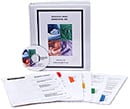Home / Blog / Section 105 HRA plans save tax dollars - $199
Section 105 HRA plans save tax dollars – $199
The following article explains how Section 105 HRA plans save tax dollars for owners of even the smallest (one-person) businesses. You could save thousands by setting up yours with Core Documents’ $199 plan document.
 Section 105 Plans: How to Save Taxes if You Own a Microbusiness
Section 105 Plans: How to Save Taxes if You Own a Microbusiness
Some businesses start small and stay small, by design. You may own such a business. Perhaps things begin and end with you, or maybe you employ one other person – your spouse. If this is the case, you should know about Section 105 plans.
Being self-employed, you already know that you can deduct 100% of your healthcare premiums from your federal and state taxes. The tax savings needn’t stop there. A properly structured Section 105 plan may let you deduct 100% of your family’s out-of-pocket medical expenses from federal, state and FICA/Medicare taxes.
That’s right – all of them. Core Documents, a major provider of microbusiness employee benefits administration services, estimates that a Section 105 plan saves a family an average of $5,000 in taxes a year.
How does this work? Section 105 of the Internal Revenue Code permits a self-employed person to set up a health reimbursement arrangement (HRA) for tax-free repayment of major qualified medical expenses not covered under a health plan. Alternately, that self-employed individual may hire a salaried employee (read: his/her spouse) and offer that employee an HRA.
If the latter choice is made, the benefits offered will not only cover the employee, but also his/her spouse and dependents. So if the new hire is the business owner’s spouse, what results is effectively a family healthcare expense account.
Most solopreneurs need to hire someone to get this perk. Can you set up a Section 105 plan without hiring an employee? Yes, if your business is a C-corp, an S-corp, or an LLC that files its federal tax return as a corporation. In a corporate structure, the corporation is defined as the employer and the business owner is defined as a salaried employee.
Otherwise, hiring an employee is a precondition to implementing a Section 105 plan. You don’t necessarily have to hire your spouse – the new hire could be your son or daughter, a more distant relative, or even someone to whom you aren’t related.
Did the Affordable Care Act restrict the implementation of these plans? Not for microbusinesses. When the IRS issued Notice 2013-54 as a follow-up to the Affordable Care Act, most businesses lost the chance to offer a discrete medical reimbursement plan. One-employee HRAs are still allowed under Section 105 using group or individual insurance coverage.
Look at all you can potentially deduct. A properly designed Section 105 plan allows eligible employee(s) and their family/families to deduct all health and dental insurance premiums, all life and disability insurance premiums, all premiums for qualified long term care coverage, all Medicare Part A and Medigap premiums, all out-of-pocket medical, dental, and vision care expenses, psychiatric care, orthodontics … anything stipulated as a qualified medical expense in Section 213 of the Internal Revenue Code. Section 105 plans can even be structured so that if an employee doesn’t max out his/her yearly deduction, the unused portion can be carried over to subsequent years.
To keep up the plan, keep the paper trail going. A business owner and a financial or tax professional should collaborate to put a Section 105 plan into play. The IRS does look closely at these plans to check that the other spouse is legitimately employed – salaried, working a set schedule of hours, and hired per a written agreement. In addition, appropriate tax forms must be filed with the IRS, including Form 940 if the employee is unrelated to the business owner.
If you want to lessen your tax liability and create an expense account to meet unanticipated medical costs, do what other microbusiness owners have done: set up a Section 105 plan.


Section 105 HRA plans are Medical Expense Reimbursement Plans that allow you to save substantial tax dollars on insurance premiums and out-of-pocket medical expenses not covered by insurance.
Section 105 HRA plans are designed specifically for small business owners that can legitimately hire their spouse, or C Corporation owner/employees, some S Corporation owners with caveats, LLCs, and more. This type of plan is made possible by Section 105 of the Internal Revenue Code, Revenue Ruling 71-588 and IRS Letter Ruling 9409006.
Core Documents has been providing Section 105 HRA plans for small business owners since 1997. They would be happy to assist you in establishing your own small self-funded Section 105 Spouse HRA plan document and administrative kit for only $199. Call us today at 1-888-755-3373 and talk to a Plan Consultant about how we can assist you and reduce 2014 income tax liability.
Online Order Form for Section 105
Fax Order Form for Section 105 HRA
M-F 8:30 AM -5:00 PM
https://www.coredocuments.com
https://www.Core105.com
Want more information on how Section 105 HRA plans save tax dollars for small business owners? Read these posts: